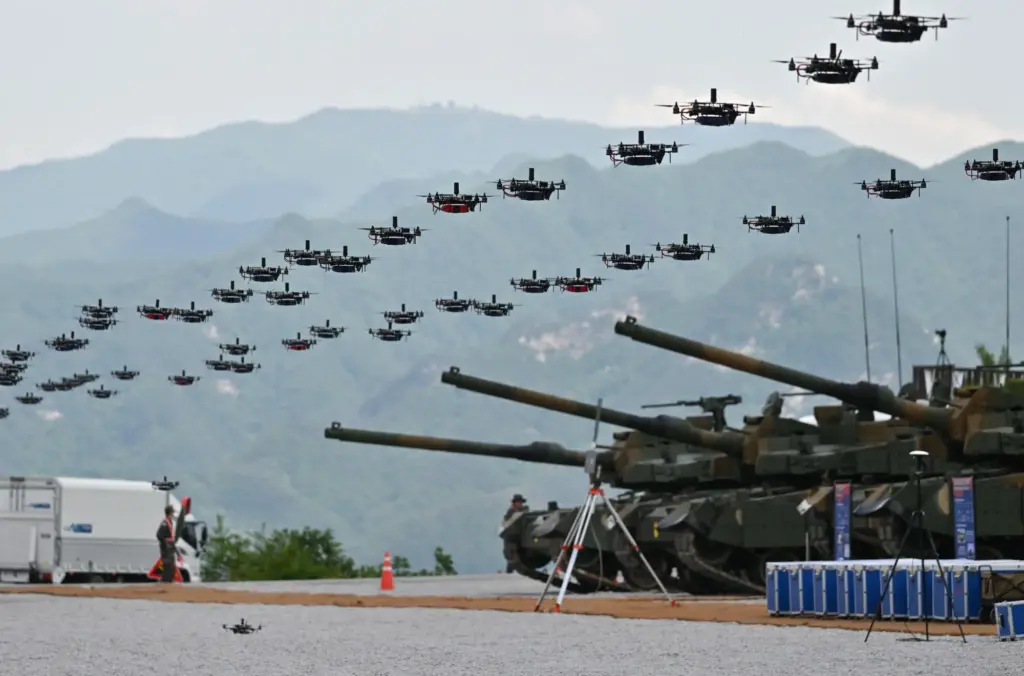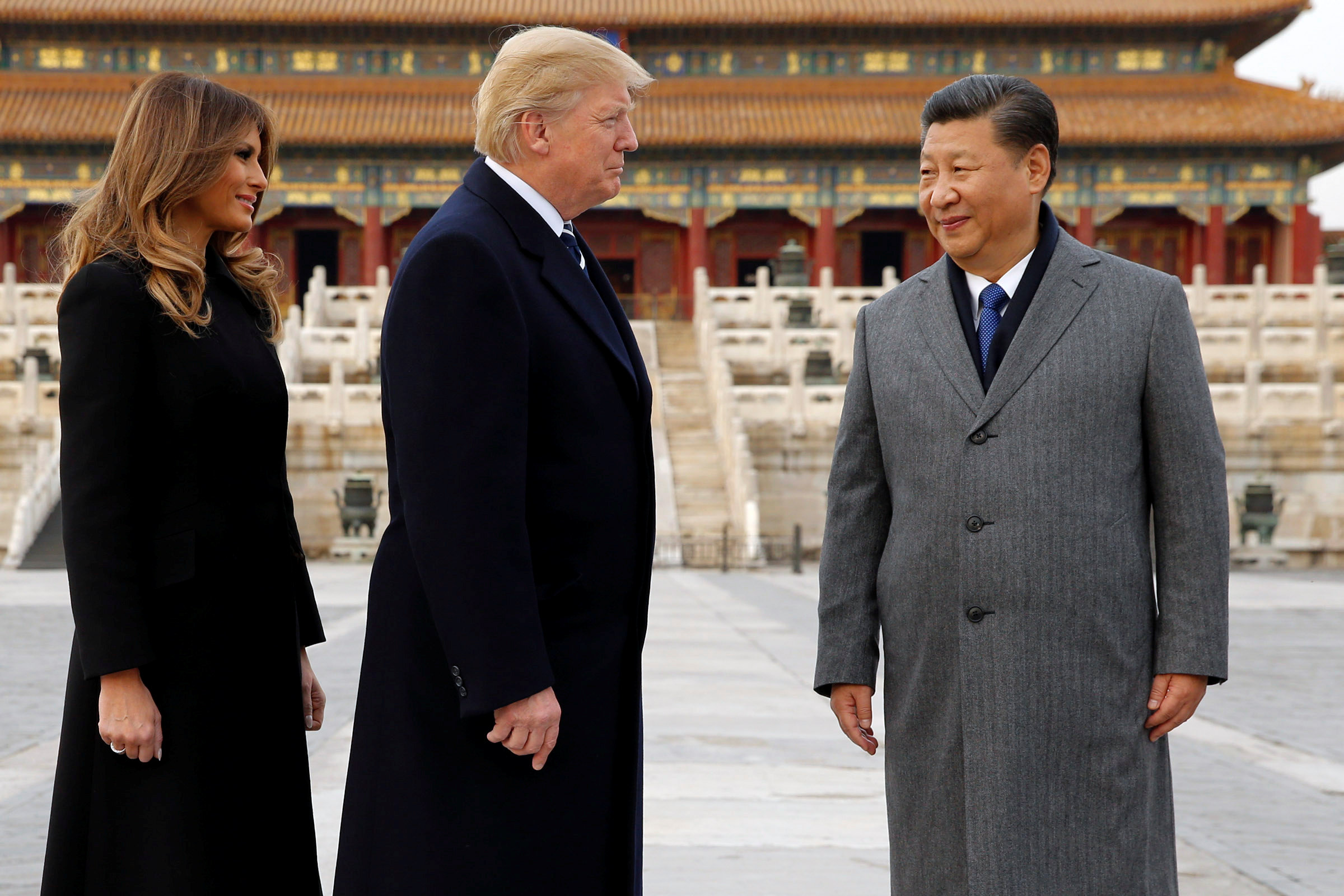The Drone Threat Over America: A Wake-Up Call for National Security
Imagine standing on your porch, watching a fleet of glowing, reddish-orange objects slice through the night sky, moving with eerie precision over one of the most secure military bases in the United States. That’s exactly what Jonathan Butner witnessed on December 14, 2023, from his family’s cabin along Virginia’s James River. What he saw wasn’t a sci-fi movie—it was a swarm of drones, some as big as a small car, buzzing over Langley Air Force Base, home to America’s elite F-22 Raptor jets. For 17 nights, these uninvited guests came and went, exposing a glaring vulnerability in the nation’s defense. The thesis is stark: America’s inability to detect, track, and neutralize rogue drones over its own soil is a national security failure that demands urgent action. The skies above us are no longer secure, and the government’s sluggish response is a troubling sign of complacency in a new era of warfare.
A Disturbing Pattern of Intrusions
Butner’s iPhone footage, the only public record of the Langley incidents, captures a chilling reality: dozens of unidentified drones, moving like a conveyor belt, evaded the sophisticated defenses of a base housing the world’s most advanced stealth fighters. You get the sense that these weren’t hobbyists tinkering with gadgets. The scale, coordination, and audacity suggest something far more sinister—perhaps reconnaissance by a foreign adversary. Retired General Mark Kelly, a seasoned fighter pilot who witnessed the swarm from a Langley rooftop, described drones ranging from small quadcopters to objects the size of a bass boat. The sheer variety in size, speed, and altitude hints at a deliberate, possibly state-sponsored operation.
This wasn’t an isolated event. Over the past five years, similar drone incursions have plagued sensitive sites across the country. In 2019, naval warships off California’s coast were shadowed by dozens of drones, some captured on night-vision equipment. Speculation swirled about UFOs, but ship logs confirmed they were drones, possibly launched from a nearby Hong Kong-flagged freighter. In Arizona, the Palo Verde Nuclear Plant, the nation’s largest power producer, faced drone activity the same year. More recently, New Jersey’s Picatinny Arsenal, a hub for advanced weapons development, reported 11 drone sightings in December 2024, sparking public frenzy. Even a U.S. airbase in the UK, storing nuclear weapons, was disrupted by drones last year. What’s troubling is the pattern: these incidents target critical infrastructure, and yet, the U.S. remains woefully unprepared to respond.
A Cold War Mindset in a Drone Age
The heart of the problem lies in a dangerous mismatch between America’s defense capabilities and the modern threat landscape. NORAD and NORTHCOM, tasked with protecting North American airspace, rely on Cold War-era radar systems designed to detect high-altitude missiles or Soviet bombers, not low-flying drones that blend into the clutter of civilian airspace. General Glenn VanHerck, former commander of both commands, admitted to Congress that these systems are blind to drones visible to the naked eye. When asked why the military didn’t simply shoot them down, he pointed to a cascade of challenges: detecting, tracking, identifying, and ensuring no risk to civilians. Firing missiles over U.S. soil, he noted, isn’t a decision made lightly.
This capability gap is more than a technical glitch—it’s a failure of imagination. For decades, the U.S. has viewed its homeland as a fortress, shielded by oceans and friendly neighbors. But drones, cheap and accessible, have rewritten the rules of warfare. Ukraine’s success in destroying Russian aircraft with small, agile drones shows their destructive potential. General VanHerck warned that the same could happen here, with drones capable of dropping explosives or crashing into F-22s on Langley’s flight line. The fact that some of these jets were relocated for their own protection underscores the absurdity: the world’s most powerful military, cowering from devices you can buy on Amazon.
Bureaucracy and Inaction
Compounding the technological shortfall is a bureaucratic mess. When drones strayed beyond Langley’s perimeter, jurisdiction splintered among the FAA, FBI, Coast Guard, and local police, with no single agency taking charge. It’s as if the U.S. government is playing a game of hot potato while potential spies hover overhead. Senator Roger Wicker, chairman of the Senate Armed Services Committee, voiced frustration at the Pentagon’s mystification, even after classified briefings. His conclusion—that these drones are likely spying platforms—echoes a logical fear: adversaries like China or Russia could be probing America’s defenses, gathering intelligence, or simply flexing their ability to embarrass the U.S.
The Biden administration’s response has been maddeningly tepid. A senior White House official dismissed the Langley incidents as the work of hobbyists, a claim General Kelly flatly rejected, citing the drones’ size and persistence. President Biden was briefed, and meetings were held, but after 17 nights, the drones simply stopped—leaving no answers, only questions. This isn’t just a policy failure; it’s a failure of urgency. General Gregory Guillot, VanHerck’s successor, has pushed for new radar systems and “FlyAway kits” with anti-drone technology, aiming to deploy them within a year. But a year is an eternity when drones can strike today.
The Broader Implications
The drone threat isn’t just about espionage—it’s about redefining warfare in an age where technology outpaces regulation. Drones are the great equalizer, allowing small actors to challenge superpowers. In war zones, the U.S. military can shoot down threats with impunity, but at home, legal and safety constraints tie its hands. Electronic jamming or gunfire risks civilian lives, and the FAA’s airspace rules add another layer of complexity. Meanwhile, adversaries exploit this hesitation, knowing America’s domestic skies are a blind spot.
Historically, the U.S. has been slow to adapt to asymmetric threats. The 9/11 attacks exposed vulnerabilities to low-tech terrorism, and drones represent a similar paradigm shift. Unlike hijacked planes, drones are harder to detect and attribute. Are they Chinese? Russian? Or just a tech-savvy prankster? The uncertainty breeds paralysis, and the lack of a clear enemy fuels complacency. But as VanHerck warned, the notion of “Fortress America” is a dangerous myth. The same technology that delivers your packages can be weaponized to surveil or destroy.
A Call to Action
The drone incursions demand a reckoning. First, the U.S. must invest in low-altitude radar systems and counter-drone technologies, like those Guillot is developing, and deploy them yesterday. Second, Congress must streamline jurisdiction, empowering a single agency—likely NORTHCOM—to coordinate responses. Third, policymakers need to rethink domestic airspace laws, balancing civilian safety with military necessity. Finally, the public deserves transparency. Dismissing these incidents as hobbyist pranks erodes trust and underestimates the threat.
The skies over Langley, New Jersey, and beyond are a wake-up call. You can almost hear the hum of drones mocking America’s invincibility, exposing a nation that’s fallen behind in a game it once dominated. If the U.S. doesn’t act swiftly, the next swarm might not just spy—it might strike. The question isn’t whether America can afford to modernize its defenses; it’s whether it can afford not to.



